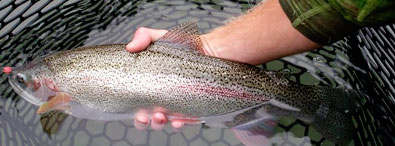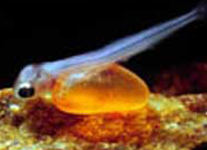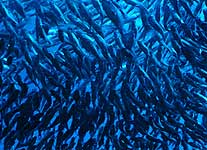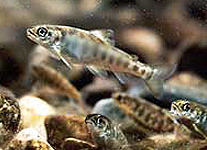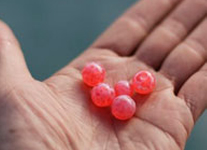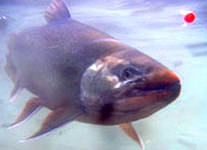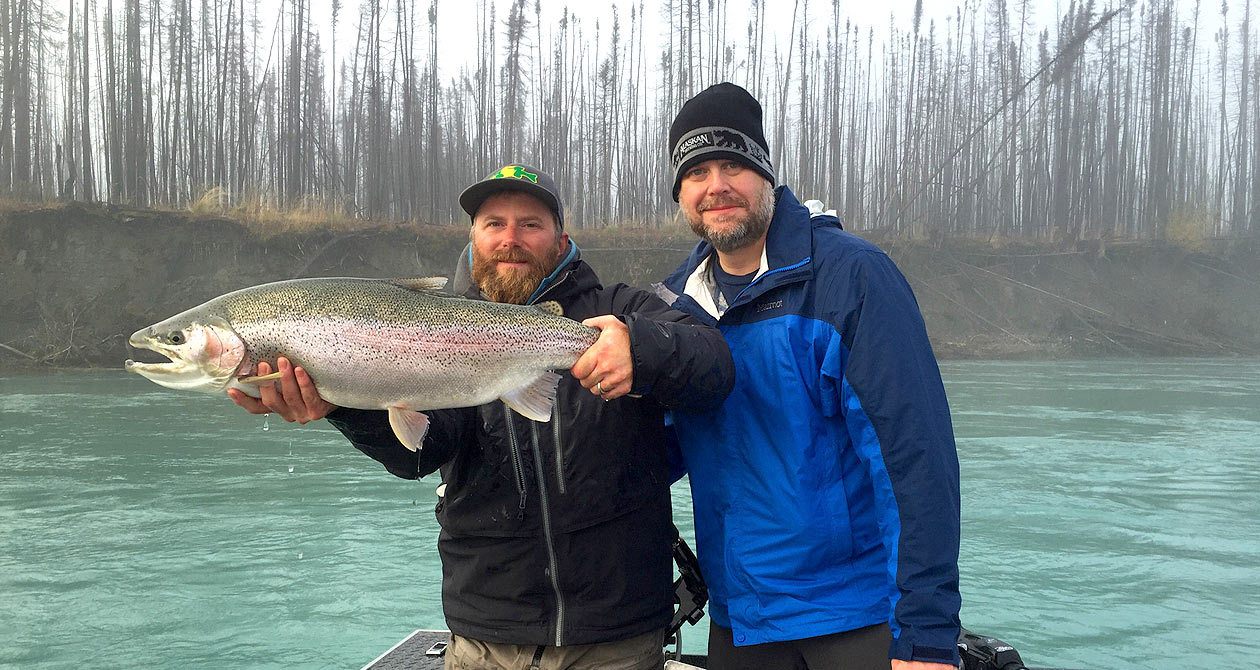Scientific Name:
Oncorhynchus mykiss, from the Greek words “onkos” and “rynchos” meaning “hook snout”, and mykiss is the Kamchatkan name for rainbow trout.
Found:
The native range of this species is the eastern Pacific Ocean and the fresh water mainly west of the Rocky Mountains. It has also been introduced into New Zealand, Australia, South America, Africa, Japan, southern Asia, Europe and Hawaii.
Appearance:
Rainbow trout have a characteristic Salmon like shape. Rainbow trout have highly variable colouration. Rainbow trout that live in lakes have a very silvery appearance, usually with a dark olive-green colour on the back. Occasionally the back is a deep steely blue, mostly in Rainbow trout that live well offshore in deep lakes or in small fish that have not yet spawned.
Numerous spots are present on the back and extend about two-thirds of the way to the lateral line down the sides. The sides are silvery and largely free of spots, while the belly and ventral surface of the head is whitish. Eyes are an olive to bronze colour. Sometimes a soft, metallic-pink colour is present along the sides of the body and the head.
Habitat:
Rainbow trout are primarily a freshwater fish, although sea-run populations, often known as steelhead, exist in some areas. It is unclear whether this migration to sea water is genetic or simply opportunistic, but it appears that any population of rainbow trout is capable of migrating to or surviving in the sea if the need arises.
Well-oxygenated, clean fresh water, with a temperature of around 55 °F is preferred, although a range from 15 °F to 70 °F is tolerated. Rainbow trout tend to thrive better in lakes than in streams or rivers, although large fish are often present in remote headwaters.



